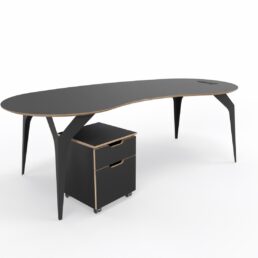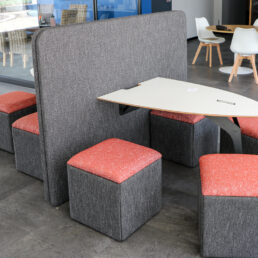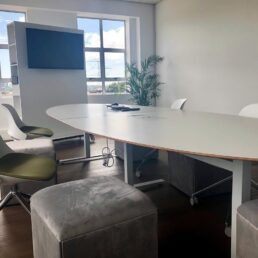
The conundrum facing many companies right now is how to make the their employee’s daily commute to and from work easier or less stressful? It is a problem because:
“Rapid economic growth — lots of jobs being added in major cities, but a lack of affordable housing — tends to push people further from the city center. While some jobs and tasks lend themselves to remote work, it’s not always the answer. Harvard Business Review recently reported on a four-year study of a major technology company that found “remote workers communicated 80% less about their assignments than colocated team members did.” And, not everyone is able to work remotely. According to the Steelcase Global Report: Engagement and the Global Workplace, 55% of people around the world never work remotely. ” – Steelcase
In order to reduce or overcome the negative knock-on effect – caused by frustration that follows employees into the office and into their meetings – the office needs to provide relief. In other words, the workplace needs to be designed to offer a seamless transition into a productive and fulfilling work day.
With an ever-increasing focus on teamwork, ideation and innovation, it is crucial to support employee collaboration in the office. Creating various “neighborhoods” kitted-out with the tools and furnishing to encourage people to actively engage with each other and their content.

“Collaborative work today takes a variety of forms from teams that are always together to formal meetings, active brainstorm sessions, informal connections and serendipitous interactions. These face-to-face and shoulder-to-shoulder ways of working help teams move faster and solve problems together in real-time. In addition, being together creates a sense of community, builds relationships and develops trust — the currency of innovation. ” – Steelcase
“Successful shared spaces should help people be productive and feel good by considering:
- Appropriate levels and types of privacy needed (visual, acoustic and territorial)
- Supporting the body in a posture appropriate for the task (lounge, task, stool height or standing)
- Intentionally plan the proximity between people, their tools, the furniture and the overall space
- Expressing the unique brand and culture of an organization
So, as work leans into the power of teams, the workplace is following suit. We are innately social beings. And, while we may never look forward to our commutes, we will continue to seek out the connections and collaborations that come from physically being with our colleagues.” Steelcase
Each business is different, each with its own style and nuances. As an office furniture manufacturer, Entrawood and Entrakor care about how your team works together. So, when we design furniture, concepts such as mobility, privacy, ease of transition, connectedness and comfort are but a few of the considerations that shape our products.
-
ROUND MOBILE OTTOMAN
-
Shell Mobile pedestal
-
Maluti Height Adjustable Single Desk
-
Maluti Height Adjustable Dual Desk
-
Mobile Pedestal with Cushion
-
SNAP conference table – round
-
SNAP conference tables – rectangular
-
SNAP Mobile Fold & Nest Desk
-
Stand-up meeting table (mobile optional)
-
Cocoon Mobile Ottoman
-
Cocoon Privacy Pod
-
Cocoon Booth
-
COCOON CAFE BENCH
-
Cocoon Meeting Booth
-
Cocoon Meeting Station
-
Cocoon Floor Based Screens
-
Elevate bench
-
Mobile TV Stand
-
Shell tablet
-
Shell meeting table – Bullet
Main reference for article is: Why We Go to the Office Is Changing by Steelcase









































